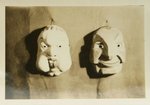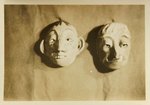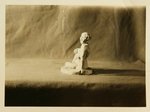Upon his return from Europe, Roger became more invested in the local art scene, joining and accepting invitations from a number of Boston-area organizations. In 1926 he was elected a Master Member of the Society of Arts and Crafts in Boston, an honor which most craftsmen received after waiting five to twenty years. He also joined the Business Men’s Art Club of Boston and later became a member of the Boston Art Club. Joining professional and recreational organizations was a knack that Roger maintained for most of his life, but some organizations provided more stimulation than others. For example, while the Boston Art Club was merely a place where Roger sometimes ate lunch with a friend, the Business Men’s Art Club held monthly dinner meetings during which a guest professional artist would offer criticisms of paintings brought by members.
Roger held one-man shows at the Grace Horne Galleries in 1927, 1928 and 1929, but also had various works included in exhibitions at the Chicago Art Institute, Providence Art Club, North Shore Art Association of Gloucester, Boston Society of Watercolor Artists, the Independent Society of Boston and the Copley Society of Boston. In 1929 one of his entries in the Pennsylvania Academy of Fine Arts exhibition was selected by the American Federation of Arts for its traveling exhibit of fifty watercolors. Although his work accorded him considerable success later in his career, some of Roger’s earlier shows donned less favorable reviews from various local critics - the efforts for which Roger would later report gained him only “a kick in the pants.” However, he was steadily elevated to relative fame in the Boston area by 1928 for the quality of his work. One critic wrote:
“A number of paintings should be mentioned in this remarkable exhibition, but as one looks about, a group of watercolors fixes the eye. They are by Roger Hayward. They stand out as the finest things on the wall. In fact they would be the finest watercolors in any show. There are several nudes, wonderfully painted by this young man, whose business acumen must, or should be, very low; for certainly no one who can paint as he does can have the remotest corner in his brains for business.” (May 7, 1928, Keene E. Sentinal)
Roger’s personal interests remained very diverse well after his graduation from MIT, and he tried his hand at several different artistic disciplines. He continued to make masks, spent some time with sculpture near the end of the decade and finished his first stereovision drawings in 1927. He was also involved with printing and developing his own film for a while, continued etching, and even took a brief stab at drama. Around 1928 Roger and his brother and sister, along with their spouses, undertook to stage a play, “Seven Men” by Max Beerbohn. Roger created several masks to use in the production as there were five or six cast members and eighteen characters required for the play. The production was shown in the home of Roger’s parents at a Christmas party, and of it Roger later related that “the audience were less numerous than the cast. The cast had the most fun.”




